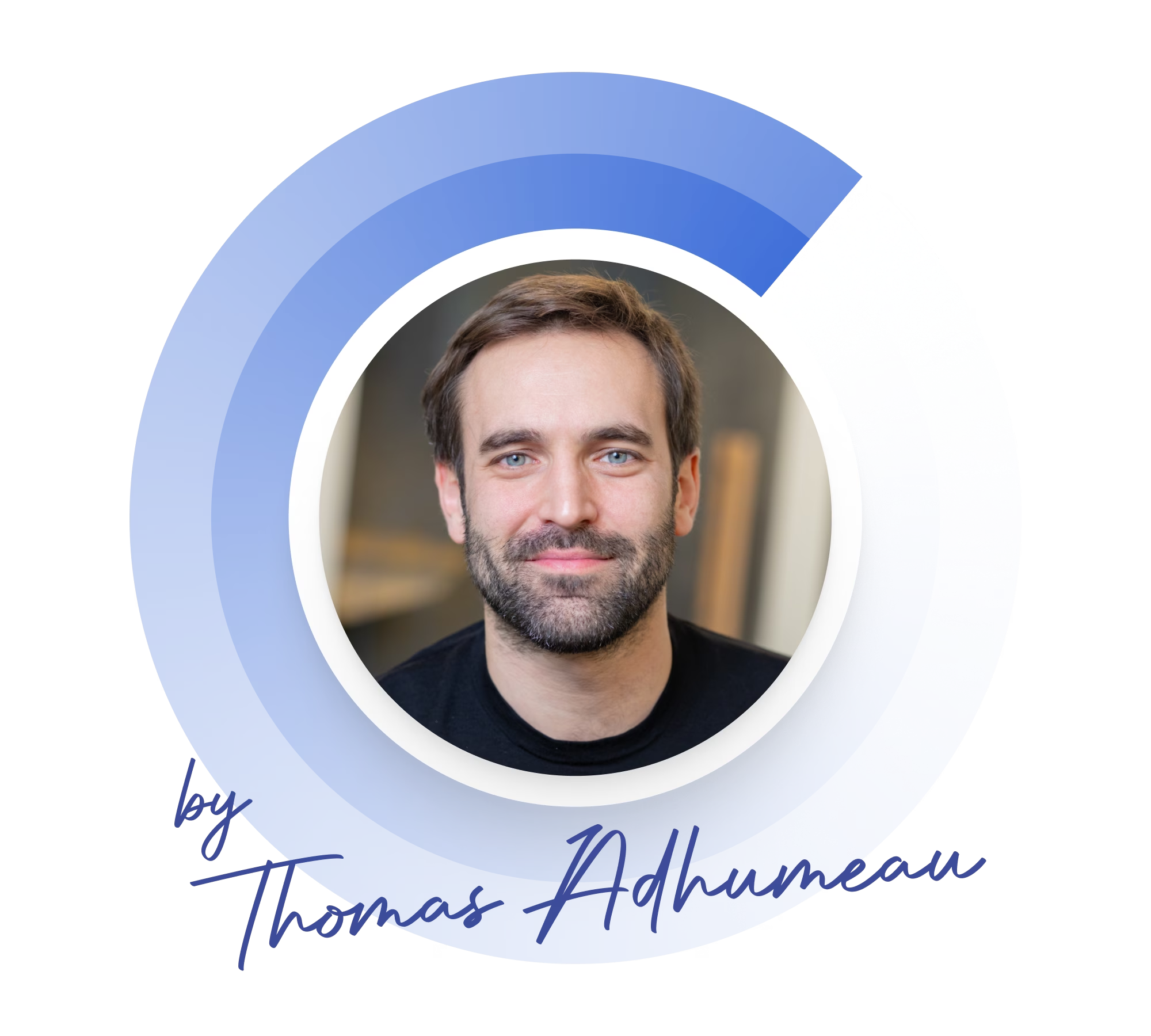In the Privacy Soapbox, we give privacy professionals, guest writers, and opinionated industry members the stage to share their unique points of view, stories, and insights about data privacy. Authors contribute to these articles in their personal capacity. The views expressed are their own and do not necessarily represent the views of Didomi.
Do you have something to share and want to take over the Privacy Soapbox? Get in touch at blog@didomi.io
Privacy has become one of the foundations of digital trust and user experience.
With that belief as a starting point, I invite you to project yourself into a near future shaped by evolutions already underway: more conscious digital habits, more autonomous technologies, and stricter regulations. We discover a daily life where personal AI agents act as interfaces, and where privacy preferences are expressed through active profiles, respected by default.
Welcome to 2030, in an internet that adjusts itself, guided as much by users as by technology.
The age of privacy: Chronicles of an Internet that self-adjusts
In 2030, the web no longer “asks”; it converses.
Consent banners have been replaced by silent exchanges between digital agents. Each user’s privacy preferences have become active profiles, expressed in machine-readable language and respected by default.
On the internet, privacy is no longer a friction point but a balancing protocol.
An ordinary morning, a different web
Léa places her bag on the table and pulls out her AI Phone. For three days, her privacy agent, Aegis, had been running in “low-connectivity travel mode”, a setting she activated before going on a family weekend getaway, limiting automatic synchronizations, disabling non-essential notifications, and temporarily suspending certain partner accesses.
She reopens Aegis’s settings and restores her current profile with a single gesture.
A summary appears: No data transfers during her trip, two services blocked for non-compliance, and four access requests pending.
She checks her messages and sees that her nanny wrote back: she won’t be able to attend Marius’s school outing. Léa opens one of the local childcare apps (one of the few that still offers a user interface these days) but Aegis intervenes:
This service does not respect the sharing preferences defined in your profile: inter-service tracking without explicit opt-in, and retention of interaction data beyond the authorized 30 days. Do you still want to browse the options?
She chooses “Suggest an alternative.” Aegis searches three other services. One of them, which she knows, is compatible with her settings (restricted sharing, contractual consent, no commercial retargeting). She approves this option and Aegis books directly.
Everything is handled by the agent. No account creation, no forms, and the contextual identifier expires in 24 hours.
Later, using her old tablet, Léa browses an educational content app, still “in UI mode,” as the teens say (old habits die hard). Before accessing it, Aegis displays a preview:
Education profile activated. Allowed data: thematic preferences, age range, session duration, no transfer to vendors. Consent compliant with your parameters. OK to open?
Léa confirms. She knows her agent operates within the rules she has already defined, no need to verify everything each time. She actually customized this profile months ago, with no cross-context sharing, local storage of interests, and alerts if a service asks for more than expected.
At the end of the day, she briefly checks her activity log. It’s a habit, not to control but to keep an overview. Nine service interactions, all compliant with her preferences, one access request automatically refused (unauthorized indirect marketing), and no transfers outside the EU. A few years ago, few people bothered with this, tracking one’s privacy status in the jungle that the old internet used to be was too complicated without an agent. Today, it carries a different meaning, and above all, it’s clear and effortless.
Post-consent media: The rise of the trust economy
At 8 a.m. in the newsroom of The Urban Observer, servers no longer collect profiles; they interpret compatibility signals.
Each connection begins with a silent dialogue between the media’s system and readers’ agents. The goal is not to capture attention anymore but to deliver content based on a set of dynamic preferences.
Léa, for her part, no longer feels like a spectator but an active participant in her digital perimeter. Aegis negotiates access conditions in advance: reading without targeted ads, persistent anonymity, automatic deletion of history after 24 hours. The media she consumes have adapted to this mode of interaction. Revenues now come from a “reading license” model, small, invisible microtransactions governed by smart contracts that guarantee fair compensation and full traceability, without exposing her identity.
For Antoine, the media’s editor-in-chief, this new paradigm has transformed the very nature of his job. His role evolved from managing a website to overseeing a trust ecosystem. Each article comes with a Data Manifest: a machine-readable description of usage and retention conditions. Editorial teams work closely with “compliance engineers,” who design these manifests as certificates of ethical execution.
Old performance indicators (impressions, clicks, bounce rate, page views) are relics of the past. Today, transparency and reliability indexes lead the way, measured by the degree of alignment between the media’s data policies and user preferences.
What matters is no longer how many people saw an ad, but how many agreed to share an interaction within a verifiable trust framework.
Algorithmic intimacy: Health, mobility, and sovereignty
In healthcare institutions, the transformation has been even more radical.
The European Health Data Space (EHDS), implemented in 2029, standardized interoperable sharing of medical data, but under one condition: each access must be initiated or validated by the patient, either directly or via their personal agent. Shared medical records are no longer simple centralized databases but distributed spaces where authorization precedes consultation.
Lucie, during her recovery, follows her rehabilitation program.
Before accessing the content, Aegis Health verifies the compliance of sources and processing policies. Non-compliant services are automatically blocked. This invisible filtering produced an unexpected effect: health information publishers reinvested in the quality of their documentation, as their access to patients now depends on their ability to prove the validity and ethical conformity of their data practices. Content can no longer be merely relevant, it must be ethically executable.
In mobility, change emerged through user habits. Transport, navigation, and micro-mobility systems interact directly with user agents via Mobility Consent Protocols.
Karim, on his scooter, is no longer tracked by permanent sensors. Services request ephemeral contextual identifiers, valid only for the duration of the ride. Urban flow analyses still exist, but rely on aggregated, anonymized datasets. These are collected without any link to an identifiable individual and processed in trusted enclaves certified by public authorities and regulatory consortiums.
These mechanisms create a new equilibrium. Cities can still optimize traffic while significantly improving the privacy of their inhabitants.
The new social data contract
For years, data was perceived as unidirectional: collected, stored, exploited, with little feedback to users. Today, in 2030, it is polyphonic. Every actor (user, service, regulator) has both reading rights and expression rights over usage conditions.
This shift stems from the convergence of three dynamics:
- Regulations have established contractual granularity. Rights and obligations are now expressed in machine-interpretable formats, enabling choices that are executable, reversible, and auditable at scale.
- Agentic technologies automate preference management, freeing users from cognitive consent fatigue while reinforcing the consistency of their choices.
- The trust economy has become a competitive differentiator. The most privacy-respectful services gain legitimacy, while others gradually lose access to qualified audiences.
The result is an ecosystem where data does not disappear but circulates through variable geometries, adjusting in real time to usage contexts instead of being captured once and for all.
Privacy becomes a balancing infrastructure rather than a barrier to overcome.
Analysis: What this fiction says about the real future of privacy
This scenario is not just a distant projection or a stylistic exercise. It describes a plausible (and likely) future where privacy preferences are not a formality or a button to click but an active reality, carried by intelligent personal agents interfacing with digital services.
Although much of this remains uncertain, this future is already taking shape.
Regulations (ePrivacy, AI Act) are evolving toward more granular, contextual, and interoperable control. Platforms are trying to reduce user consent fatigue while staying compliant. Users, for their part, expect a smooth experience, but not at the expense of their digital sovereignty.
This shift underway is not a rupture but a natural continuity that will give everyone the ability to control, understand, and contract their digital interactions.
The future will almost certainly involve transforming consent through exchanges between intelligent systems, where trust is computed, documented, and respected.
But there is still a long road ahead, and major risks if we move too quickly. One of the biggest would be trading data protection for AI convenience: bypassing rather than delegating, out of laziness, perhaps, or fatigue, certainly. Time will tell. But one thing is certain: the privacy of tomorrow must be designed today, precisely to ensure that the internet continues to serve rather than harm.
Epilogue
In the newsroom, Antoine reviews his indicators: 100% of agentic interactions respected, no compliance incidents reported in six months. Readers are flocking in, but he retains only what matters: signals of trust, not identity. And that is precisely why they stay.
Léa, on her side, checks her activity log: nine compliant interactions, zero abuse, no implicit resale. Vigilance has given way to a form of quiet mastery.
The web has adjusted: less curious, more virtuous, less talkative, and infinitely more reliable.

.svg)


















